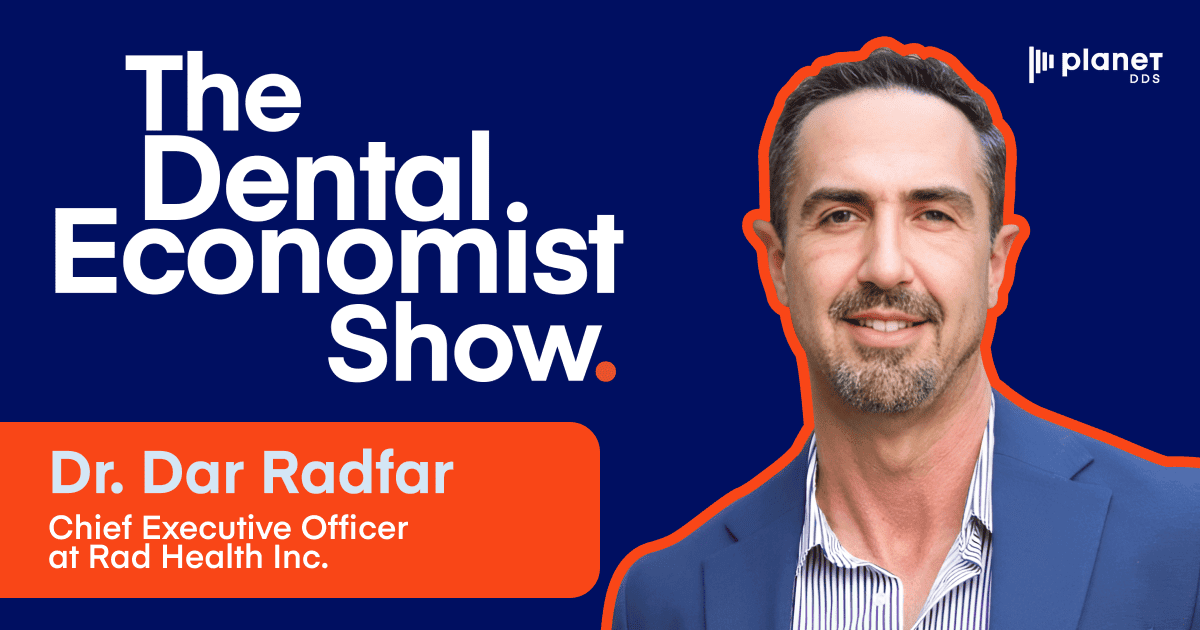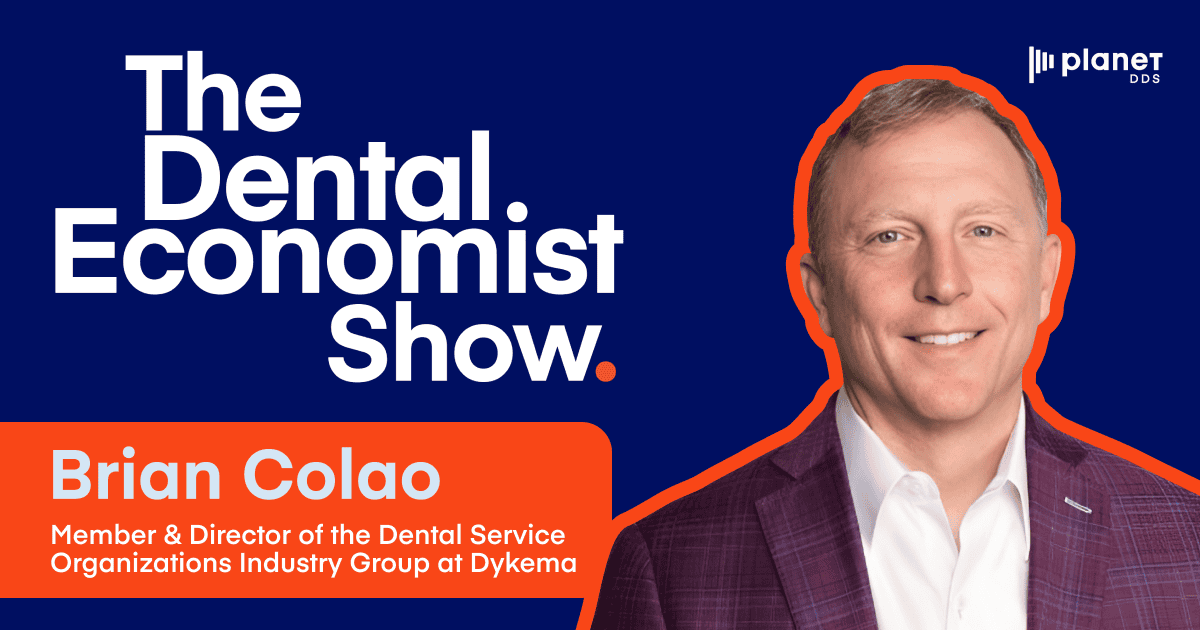Dr. Dar Radfar on the Role of Dentists in Sleep Apnea Diagnosis and Treatment

In this episode of The Dental Economist Show, host CRO Mike Huffaker of Planet DDS sits down with Dr. Dar Radfar, owner of 805 Dentistry and CEO at Rad Health Inc. Join them as they discuss the vital link between dentistry and sleep medicine, as well as the different types of sleep apnea, effective treatment options, and how incorporating these services can boost your dental business’ revenue while enhancing patient care.
About the Guest
Dr. Dar Radfar has been a key figure in the dental industry since 2002, owning and operating leading dental practices such as 805 Dentistry and Oxnard Gentle Dentistry. He has also been involved in various dental seminars and coaching programs through Rad Seminar and Coaching, where, since March 2014, he educates and mentors other dental professionals. Dar is the CEO of Rad Health Inc., where he focuses on sleep apnea solutions.
Episode Highlights
In this episode, Dr. Dar Radfar shares insights on the role of dentists in sleep apnea diagnosis and treatment. Here are some highlights from the show:
Key Indicators and Treatments for Sleep Apnea
Dr. Radfar explains the three main treatments for sleep apnea: CPAP machines, oral appliances, and surgical options. He emphasizes that while CPAP is the most commonly prescribed solution, many patients struggle with its comfort and compliance. For those with mild to moderate sleep apnea (stopping breathing less than thirty times an hour), an oral appliance is an effective alternative, repositioning the jaw to keep the airway open. For severe cases or those who cannot tolerate other treatments, surgery, such as the Inspire device, can be an option.
He also describes how the surgeries either remove obstructions from the throat or use implanted devices to stimulate muscle activity to prevent airway blockages. Dr. Radfar reinforces the importance of addressing sleep apnea not just for better sleep but for overall health, as untreated sleep apnea can lead to serious conditions such as heart disease and diabetes.
Dentistry’s role in diagnosing sleep apnea
Dr. Radfar highlights the pivotal role dentists can play in identifying and managing sleep apnea. Given that dentists see fifteen to thirty patients a day, they are in a prime position to spot early signs of sleep disorders, such as teeth grinding (bruxism) and tongue scalloping. These signs indicate that a patient may be struggling for air during sleep. Additionally, dentists can review a patient’s medical history for comorbid conditions such as high blood pressure, acid reflux, or diabetes—issues commonly associated with sleep apnea.
By integrating sleep health into routine dental appointments, dentists can help guide patients toward sleep studies and appropriate treatments, thereby addressing not only oral health but also contributing to a patient’s overall well-being.
Incorporating sleep apnea treatment in DSOs
Dr. Radfar explains how incorporating sleep apnea treatment can be a transformative opportunity for dental service organizations (DSOs). By offering this holistic approach, a DSO differentiates itself from standard dental practices, elevating its care to focus on total patient health. Internally marketing this service to existing patients can significantly increase engagement, driving consultations for sleep apnea.
From a financial standpoint, the return on investment (ROI) is compelling—adding sleep apnea treatment can bring an additional $200,000 per practice annually, potentially boosting the practice’s valuation by five to 10 times that figure. Moreover, training staff on sleep apnea diagnosis and appliance fitting is relatively simple and can be done virtually, making it an easy addition for dental groups looking to enhance both patient care and profitability.
Overcoming resistance to change
Dr. Radfar addresses the common hesitancy among dentists to adopt new treatments, even when the benefits are clear. He suggests that the best way to overcome this resistance is through personal experience—by becoming a patient or treating close staff members or family. Dr. Radfar himself became an advocate for sleep apnea treatment after using the appliance personally and seeing its benefits. This firsthand experience is often pivotal in persuading dentists to offer the treatment in their practice.
Once a team member or family member experiences improved sleep, energy, and overall health, the value of the treatment becomes undeniable. He compares the situation to when dentists first began incorporating implants—initial skepticism eventually gave way to widespread adoption, and he believes sleep apnea treatment will follow a similar trajectory once practitioners see the life-changing results firsthand.
About The Dental Economist Show
Don’t miss out on episodes with special guests to discuss top strategies to grow your dental business. Tune in to the The Dental Economist Show weekly to learn how to optimize your practice’s value and stay ahead in a rapidly evolving industry.



